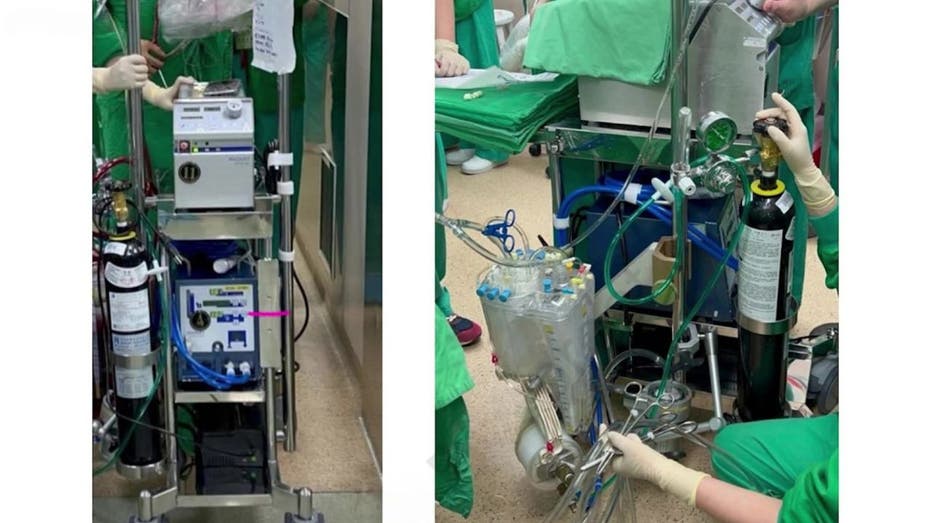World’s First Continuous Beating Heart Transplant: A Revolutionary Medical Breakthrough

Introduction to a Groundbreaking Procedure
Surgeons at National Taiwan University Hospital (NTUH) have made history by successfully conducting the world’s first heart transplant in which the donor organ remained continuously beating throughout the procedure. This innovative technique eliminates the traditional pause in blood flow, known as ischemic time, which has long posed risks to heart health during transplants. By ensuring that the heart continues to pump oxygenated blood without interruption, NTUH has raised the bar for cardiac surgery, offering new hope for patients globally.
The Problem with Traditional Heart Transplants
Typically, heart transplants involve cold storage, which halts blood flow to the organ. Even a brief period without oxygen can inflict damage on the heart muscle, increasing the likelihood of rejection or complications after surgery. The revolutionary approach developed by NTUH utilizes a custom organ care system that functions like a portable life-support machine, delivering oxygenated blood to the heart from the moment it is extracted from the donor until it is successfully implanted in the recipient.
How the Organ Care System Works
Inspired by the ECMO (extracorporeal membrane oxygenation) life support method, NTUH’s organ care system employs a sophisticated network of pumps, oxygenators, and reservoirs to maintain the heartbeat outside the body. During the pioneering surgery, the surgical team transported a donor heart that was still beating between operating rooms while connected to this remarkable device. The recipient, a 49-year-old woman suffering from dilated cardiomyopathy, experienced a smooth recovery and demonstrated impressively low cardiac enzyme levels, indicating excellent heart muscle health.
-
Boost Your Home Wi-Fi Speed and Security with These Simple Tips

-
Major Healthcare Data Breach Exposes Information of 5.5 Million Patients

-
US Government Considers Acquiring 10% Stake in Intel to Boost Domestic Chip Industry, With Support from Senator Bernie Sanders

-
Human Interventions Occur Every 9 Minutes During AAA’s Driver Assistance System Test

A Comparison to Previous Techniques
While Stanford University previously experimented with “beating-heart” transplants in 2023, their method still involved short ischemic periods of 10 to 30 minutes during the transfer. In contrast, NTUH’s groundbreaking method ensures that the heart never stops beating, fundamentally changing the landscape of heart transplantation. “The hearts were still beating before procurement, continued beating after procurement, and never stopped,” stated Chen Yih-shurng, head of NTUH’s organ transplant team.
Looking Towards the Future
With two successful transplants already achieved using this technique, NTUH plans to further refine the organ care system to enhance its effectiveness and accessibility. Their groundbreaking findings, published in the Journal of Thoracic and Cardiovascular Surgery Techniques, have the potential to redefine transplant protocols around the world. As demand for donor hearts continues to exceed supply, this innovation presents a promising solution for shorter waiting lists and improved patient recoveries.
Impact on Patients and the Broader Community
NTUH’s milestone is not merely a feat of technical innovation; it is a major step forward in saving lives. By eliminating ischemic time, this pioneering approach transforms the narrative from “impossible” to “I’m possible.” For patients awaiting heart transplants, this breakthrough signifies the potential for healthier donor hearts, reduced complications, and an enhanced chance at a renewed life. As the team emphasizes, zero ischemic time equates to zero unnecessary risks.
Your Thoughts on This Breakthrough
How do you feel about this new procedure? Does it inspire hope regarding organ transplants? Share your thoughts with us at Cyberguy.com/Contact.
Stay Informed and Engaged
For more insights on technology and security alerts, subscribe to the free CyberGuy Report Newsletter at Cyberguy.com/Newsletter.
Join the conversation and let us know what stories you’d like us to cover or ask any questions you may have. Follow Kurt on his social channels for updates and answers to the most frequently asked CyberGuy questions.
Copyright 2025 CyberGuy.com. All rights reserved.
